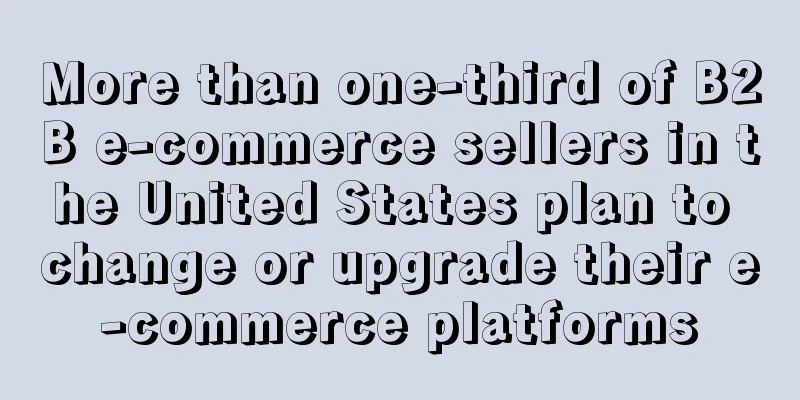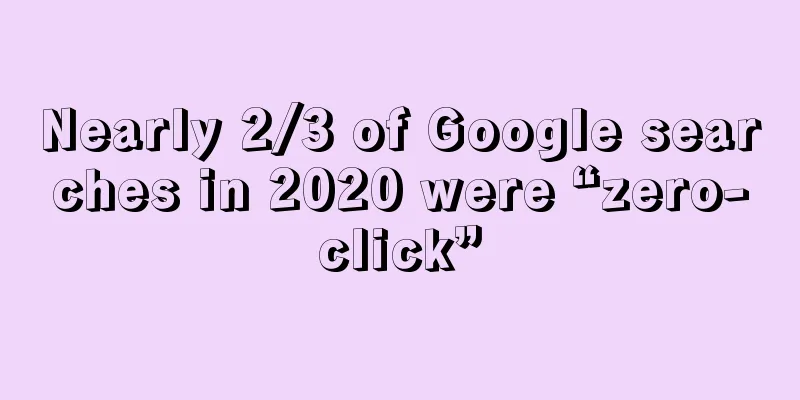More than one-third of B2B e-commerce sellers in the United States plan to change or upgrade their e-commerce platforms

|
Amid ongoing challenges from the pandemic and supply chain disruptions, companies are relying more heavily on e-procurement systems to buy what they need. Platform vendors are also facing greater pressure, and in response, vendors are launching new technologies such as "headless commerce , " providing access to global markets and adding social commerce capabilities.
According to the 2022 E-Commerce Platform Report :
18% of retailers want to change e-commerce platforms ; 39% of retailers said that investment in e-commerce platforms in 2021 was very effective in increasing conversion rates ; 71% of retailers plan to increase investment in e-commerce technology this year to attract new customers ; 42% of retailers said they have used the same e-commerce platform for more than 5 years ; 12% of retailers said they were most likely to choose "headless commerce" technology for their next e-commerce platform.
Data shows that in 2021, online sales of US B2B e-commerce websites, login portals, and marketplaces increased by 17.8% from US$1.39 trillion in 2020 to US$1.63 trillion. The growth rate of B2B e-commerce in 2021 was 1.17 times the sales growth of all manufacturing and distributors in the United States.
According to a survey by Digital Commerce 360, retailers considering changing platform providers in 2022 prefer to build their platform in-house ( 18%) , with Shopify Plus ranking second (17%).
Of the B2B sellers surveyed by Digital Commerce 360 in January 2022, 61% listed e-commerce platforms/apps as one of their top three technology priorities for the year.
More than 18% of the 93 retailers surveyed by Digital Commerce 360 said they are looking to switch e-commerce platforms , with more than 29% saying they expect to pay between $100,000 and $500,000 to transition to a new platform. 41% of retailers plan to make switching or upgrading their e-commerce platform a top technology budget priority in the next year.
Analysts say B2B e-commerce sales are accelerating in 2021, largely because more business buyers and sellers now view digital commerce as a more efficient and effective way to research and purchase business goods and services.
B2B e-commerce sites expanded at a healthy pace in 2021. But another fast-growing channel, including e-procurement and other online buyer/seller networks, grew 17% year-over-year to $934.2 billion from $798.4 billion in 2020.
In one sign that B2B marketplaces are becoming part of mainstream e-commerce, collective sales on marketplaces grew 130% year-over-year to $56 billion in 2021, according to estimates from Digital Commerce 360. USA B2B E-commerce |
<<: Home decoration remains popular, with Home Depot's Q4 sales reaching US$35.7 billion!
>>: Freight forwarding giant's network attacked, global operations affected
Recommend
What is Exact Online? Exact Online Review, Features
<span data-docs-delta="[[20,{"gallery"...
What is lotte super? lotte super Review, Features
lotte super operates stores with various concepts ...
What is AmzBoost.com? AmzBoost.com Review, Features
AmzBoost.com is a US website dedicated to serving ...
Personal bank card withdrawals and cross-border payments may be frozen? The truth is...
In the past two days, the cross-border circle has...
Digital payments in India to account for 71.7% of all transactions by 2025
It is reported that on Wednesday, ACI Worldwide ,...
Amazon and eBay's advertising revenues grew, but sellers' operating costs increased
For sellers on e-commerce platforms, advertising ...
What is iextrans? iextrans Review, Features
Meihuan (Shanghai) E-Commerce Co., Ltd. is a serv...
What is Shuangkai International Logistics? Shuangkai International Logistics Review, Features
Shuangkai International Logistics Company , headqu...
With sales of 60 million in one year, Amazon seller: the goal this year is 100 million!
For many sellers, the cross-border circle in the ...
Japan appoints “Minister of Loneliness”: How lonely are the Japanese?
According to Japanese media reports, Japanese Pri...
Traffic from multiple head links dropped significantly, and Temu sellers saw a 40% decrease in orders
According to sellers’ feedback, Temu’s traffic ha...
What is Winky Lux? Winky Lux Review, Features
Winky Lux is an American beauty brand founded in ...
Invested 8.8 million! Shenzhen Dama invested in a blue ocean category
"How can a company with absolutely no techni...
What is Xiaoxing Logistics? Xiaoxing Logistics Review, Features
The predecessor of Xiaoxing Logistics is an intern...
What is Hipacking? Hipacking Review, Features
Shenzhen Hipacking International Warehousing Serv...









